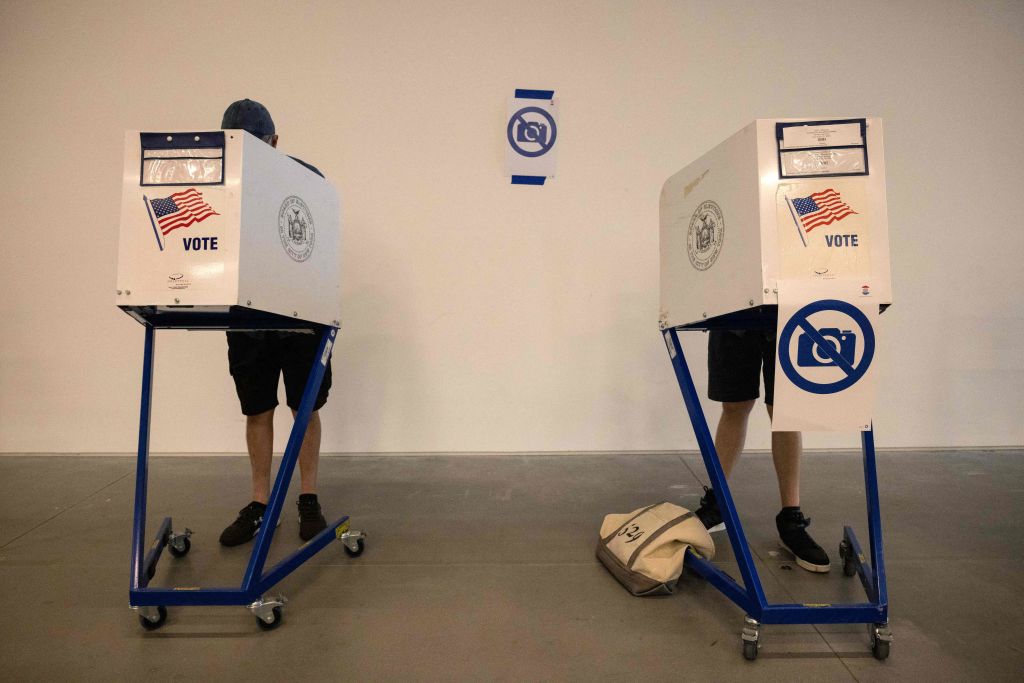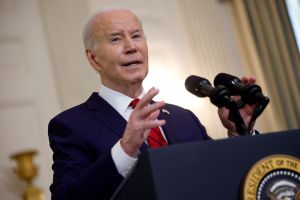Should you trust the polls?
One must pay close attention to keep up with the mood among Democrats about the ever-nearing midterms. Over the summer, utter despair gave way to a “hey, maybe things won’t be quite as apocalyptic as we feared.” This very cautious optimism soon morphed into confidence that unappealing GOP candidates, Dark Brandon’s brilliance, and Dobbs’s awfulness were conspiring to deliver an embarrassing result for the GOP.
Coming down from that late-summer high, liberals have found a familiar focus for their anxiety: the polls. “Yes, the polling warning signs are flashing again,” read the headline of a piece by the New York Times’s polling guru Nate Cohn on Monday. The particular warning sign that has Cohn worried is the fact that “Democratic Senate candidates are outrunning expectations in the same places where the polls overestimated Mr. Biden in 2020 and Mrs. Clinton in 2016.” In places where the polls were widest of the mark two years ago, midterm polls show Democrats outperforming expectations this time around. The clearest example, he says, is Wisconsin, where polls show a tight race between Republican incumbent Ron Johnson and Democrat Mandela Barnes. In places where the polls were pretty accurate two years ago, like Georgia, surveys have been delivering less surprising results. “It raises the possibility that the apparent Democratic strength in Wisconsin and elsewhere is a mirage — an artifact of persistent and unaddressed biases in survey research,” says Cohn.
In a battle of the polling, FiveThirtyEight’s Nate Silver has responded to Cohn with a list of reasons why he is less worried. Among them: the fact that polls ahead of elections and referenda this summer haven’t shown a strong Democratic bias, and the fact a consistent polling bias in one direction over multiple elections has historically been pretty rare.
Interestingly, Silver also notes that “we’ve seen relatively few ‘gold standard’ polls sponsored by major media news organizations this cycle, perhaps because those polls tended to have a Democratic bias in 2020.” This, he argues, makes it less likely for polling averages to overstate the Democratic vote this time around. Those averages will be more weighted towards Republican-leaning pollsters who have had a good election in 2020. (Of course, Nate Silver’s solution to the polling trepidation is to swap one god for another: don’t obsess over a given poll or even a polling average. Instead, bow before The Model.)
The stakes for the polling industry are high this time around. If the problem of under-counting Republican-leaning voters persists six years after it meant the polls missed Trump’s 2016 win, then many will wonder, with good reason, whether we should continue to pay much attention to their surveys. Trust in the polls can only survive so many high-profile misses.
In fact, I think previous mistakes are already having an impact. The midterm conversation seems a lot less poll obsessed so far. Political junkies seem to be savvier consumers of polls than they were even a few years ago. Look, for instance, at how much weight was placed on the special election in New York last month: here was an actual election that showed a strong Democratic outcome, not just a poll.
Meanwhile, the shine has long since worn off the boffins’ models, with many realizing that the clarity they offer is often a mirage. Silver, for example, is no longer the whizz kid who called every state correctly. He’s more circumspect, and more reluctant to give definite answers. If you want to cling to the certainty of a number, go ahead and fire up fivethirtyeight.com. It’ll tell you that, when they run The Model, Democrats keep control of the Senate 70 times in 100 and that the president’s party has “an 80 percent chance of holding between 48 and 54 senate seats.” In other words, it’s a close run thing.
But you don’t need a model to tell you that. Instead, glance at the polls, notice that there are a large number of Senate races that are forecast to be close races with either result within the margin of error. Understand that a wide range of outcomes is possible. Then close your laptop and go for a walk.
*** Sign up to receive the DC Diary in your inbox here ***
Democrats punt on gay marriage vote
A vote on gay marriage was gearing up to be a major pre-midterm fight on the Hill, but Senate Democrats have decided to punt on a vote on the Respect for Marriage Act until after the elections.
The move reveals the push for the legislation to be a serious effort to codify the rights of gay couples and not just a political stunt designed to put Republicans in an awkward position ahead of close races this fall. Tammy Baldwin, the first openly gay person to be elected to the Senate and a co-sponsor of the bill, told reporters this week that, “We’re very confident that the bill will pass, but we will need a little more time.”
“If you do it after the election, it is clearly not something that you’re doing just for political purposes, and I think people will think about it more thoughtfully because of that,” said Republican Senator Roy Blunt.
Biden won’t take the bus
So much for Biden’s love of public transportation. The president who, as a senator, took the train to work, won’t be jumping aboard the VIP bus for dignitaries when he attends Queen Elizabeth II’s funeral Monday. A handful of foreign governments had reportedly complained about the plan for a short bus to the funeral, citing either old age or security considerations. Exactly which excuse the Biden administration used is not known.
What you should be reading today
Charles A. Coulombe: What Americans can learn about the monarchy
Peter Van Buren: Vanity plates and the fight for free speech
John Pietro: How Russia is forcibly relocating Ukrainians
Shawn McCreesh, New York: Will the New York Times go on strike?
Josh Rogin, Washington Post: A conservative think tank turns away from Reagan and towards Trump
Michael Brendan Dougherty, National Review: The question for Ron DeSantis
Poll watch
President Biden job approval
Approve: 41.9 percent
Disapprove: 53.6 percent
Net approval: -11.7 (RCP Average)
Ohio senate race
J.D. Vance (R): 44 percentz
Tim Ryan (D): 40 percent (the Hill/Emerson)


















